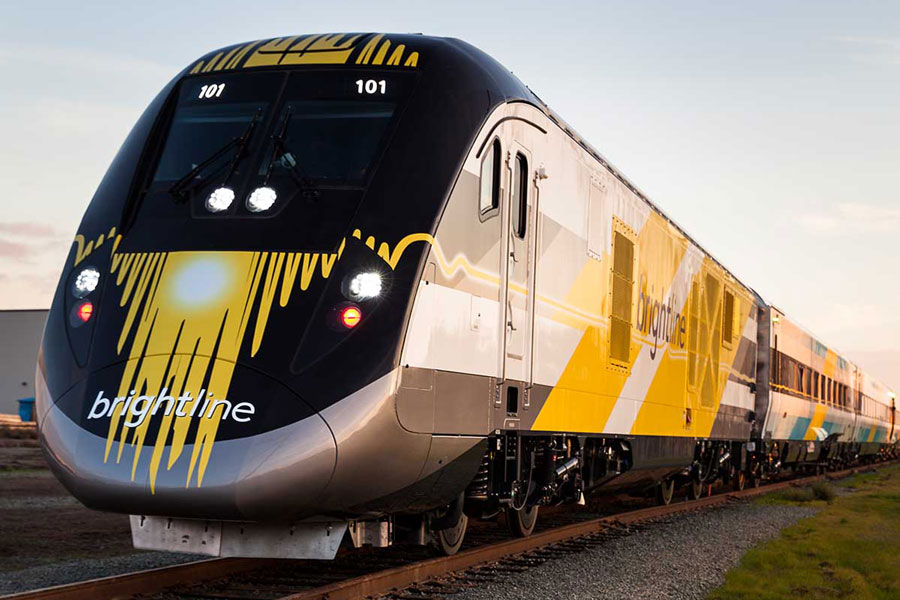Caltrain Completes Electrification Between San Francisco and San Jose Caltrain, with partners Pacific Gas and Electric Company (PG&E) and Balfour Beatty, has completed energization of the 51-mile corridor between San Francisco and San Jose. Caltrain can now begin...
Brightline, the new privately-run passenger train service in Florida, carried its first paying passengers this past Saturday. For now, trains are only running between West Palm Beach and Fort Lauderdale. The trip takes 40 minutes on Brightline, compared to 60 minutes on nearby Tri-Rail commuter trains or as much as two hours driving in rush hour traffic. Brightline expects to extend service to downtown Miami later this year.
Brightline is not just exciting because it’s a new train service. It’s doing a number of things that could influence and improve train service around the country.
Initial impressions are very positive. Riders have pointed out how “European” Brightline seems. This is presumably because it has adopted a number of sensible ideas that have been proven overseas, but that American train operators have resisted. These range from things as minor as reserved seating, to major choices about how the train is designed and operated.
Brightline is proving how important modern equipment is, not only for passenger comfort, but also for smooth operation. Trains operate as unified sets with locomotives at both ends, so they can simply reverse direction at the end of their run. The unified sets avoid the mechanical and electrical problems that can arise from couplings, and eliminates the nuisance (and possible hazard) of vestibules between cars.
Brightline operates with high-level platforms on tracks shared with freight trains, something American railroads have always thought incompatible because of clearance issues. Brightline solved this by trimming platforms back several inches, then having a bridge plate automatically extend from the car to fill the gap. This allows all the doors to open and removes the need to climb steps, getting passengers on and off the train quickly. It also makes the train universally accessible.
Brightline’s equipment choices are already spreading beyond Florida. The consortium of states purchasing new equipment for their Amtrak services are getting coaches that are expected to be very similar to Brightline’s.
The service could also offer lessons about how fast, frequent passenger trains can operate smoothly on freight tracks. Although the Brightline enjoys the benefit of sharing a common owner with its host freight railroad, it will still need to co-exist peacefully with the railroad’s core freight business. The way this happens could be informative for Amtrak and states as they negotiate with their host railroads.
We expect Brightline will be successful, especially after it begins serving Miami. We’ll also be paying close attention to the policy lessons it can offer.
Tell Congress you want trains like Brightline all across the country.
Articles we enjoyed
Brightline launches higher-speed inter-city service
Congressmen press Amtrak for PTC status update
Cost climbs by $2.8 billion for California bullet train
Malaysia, Singapore to discuss high-speed rail project
High-speed train between Tel Aviv and Jerusalem makes first test run
The Latest from HSRA
Our Latest Blog Posts
Check out the latest news, updates, and high speed rail insights from our blog!


